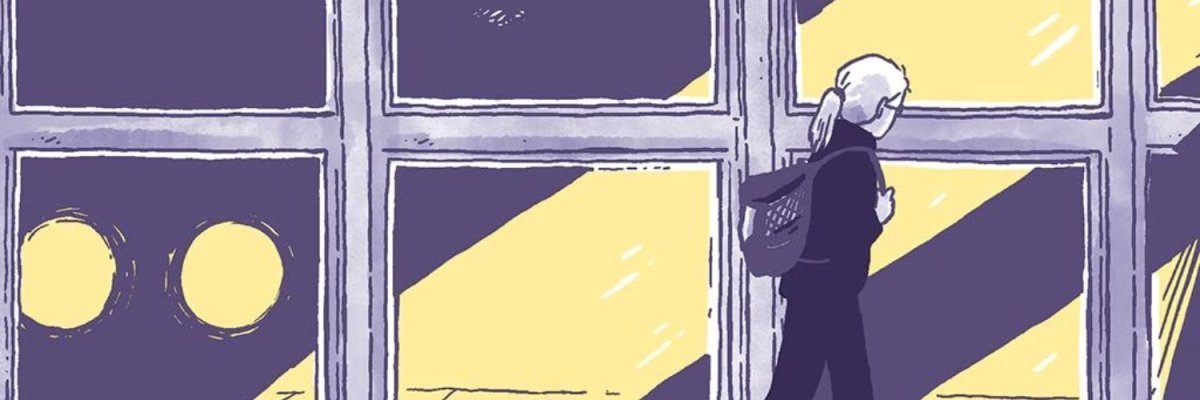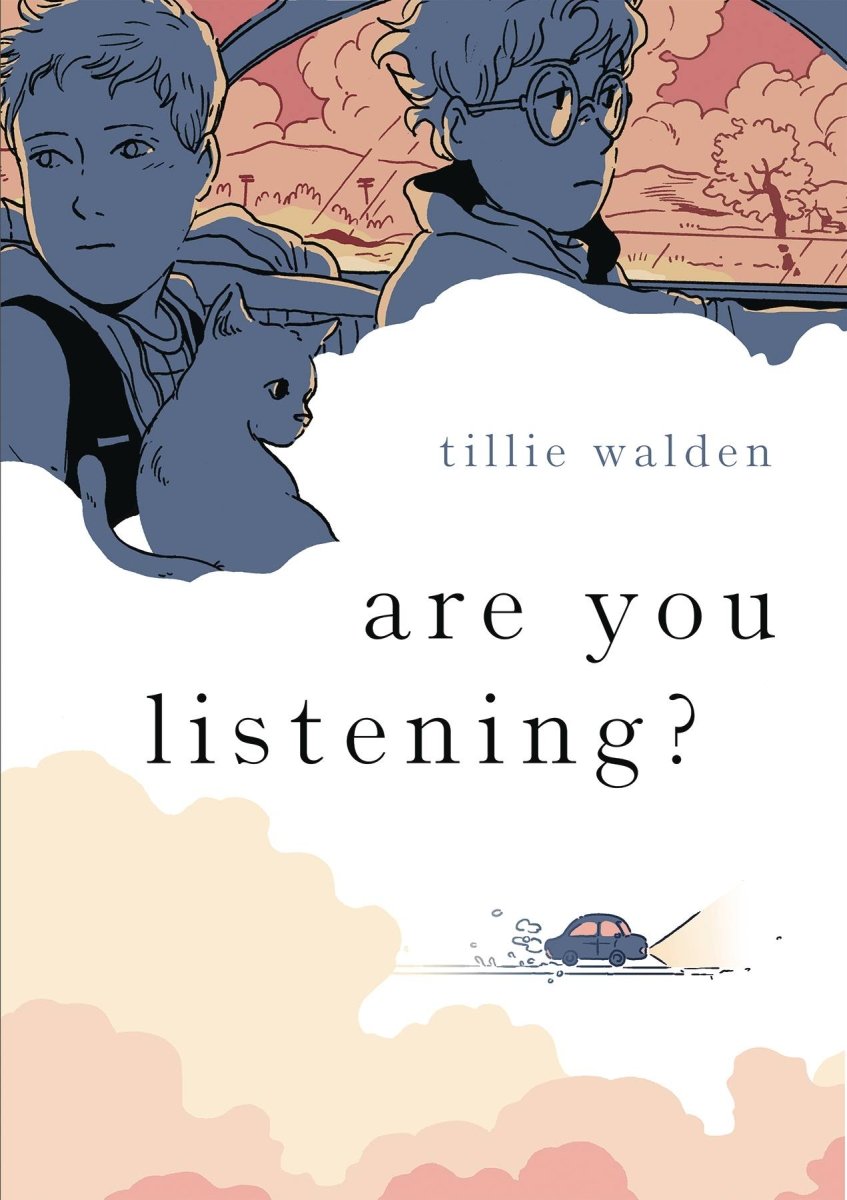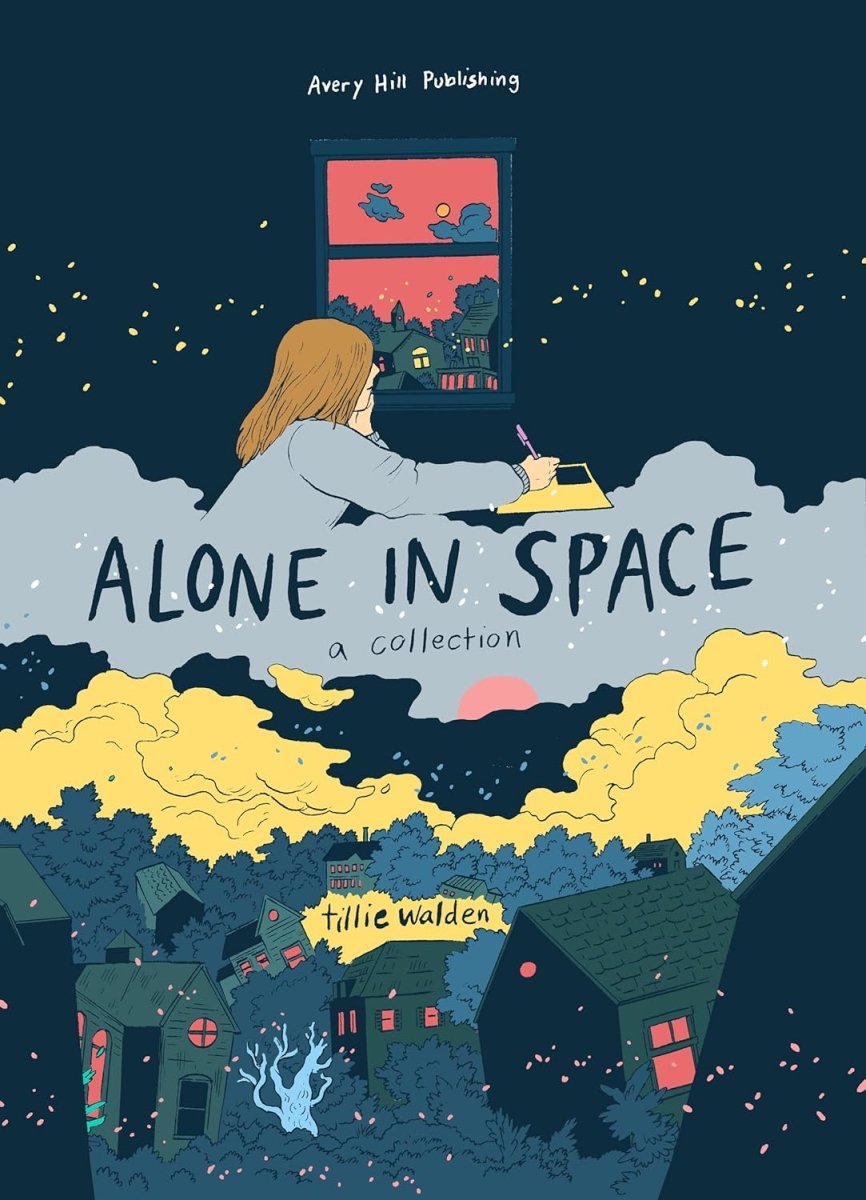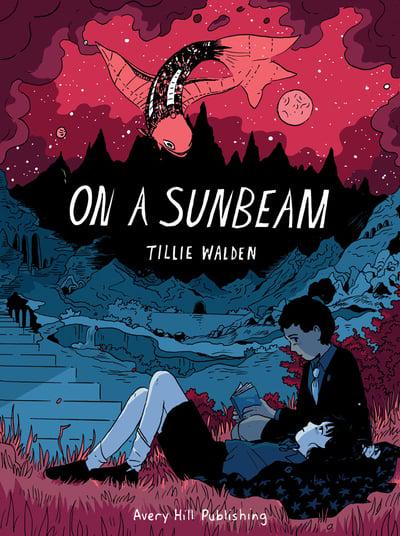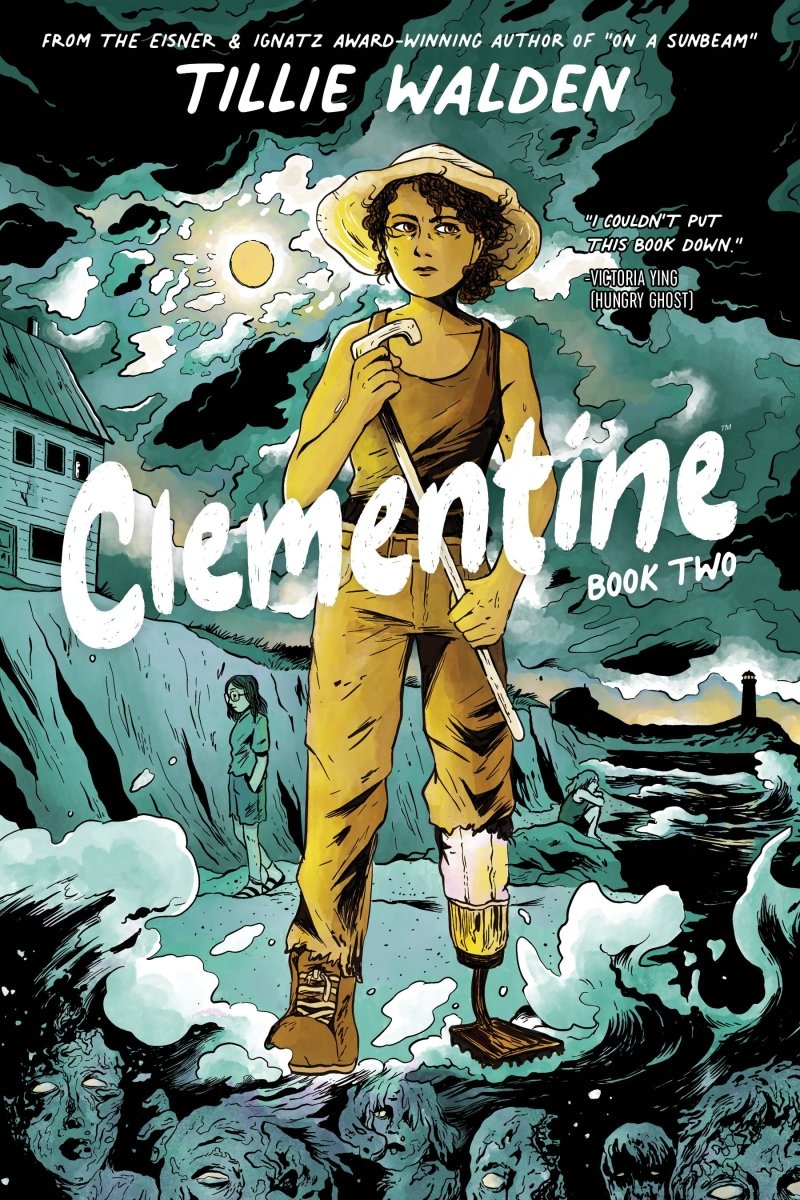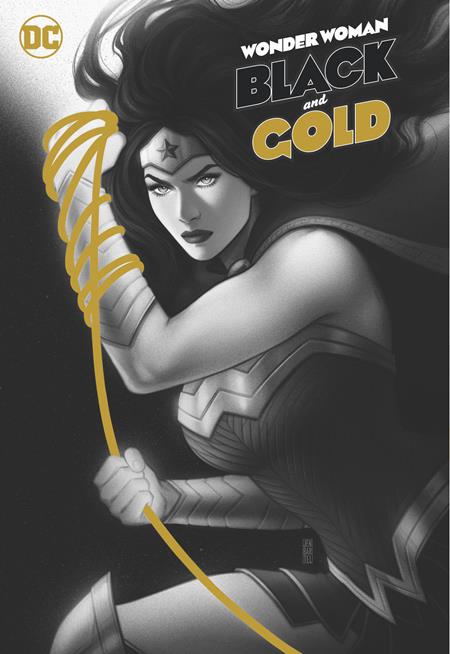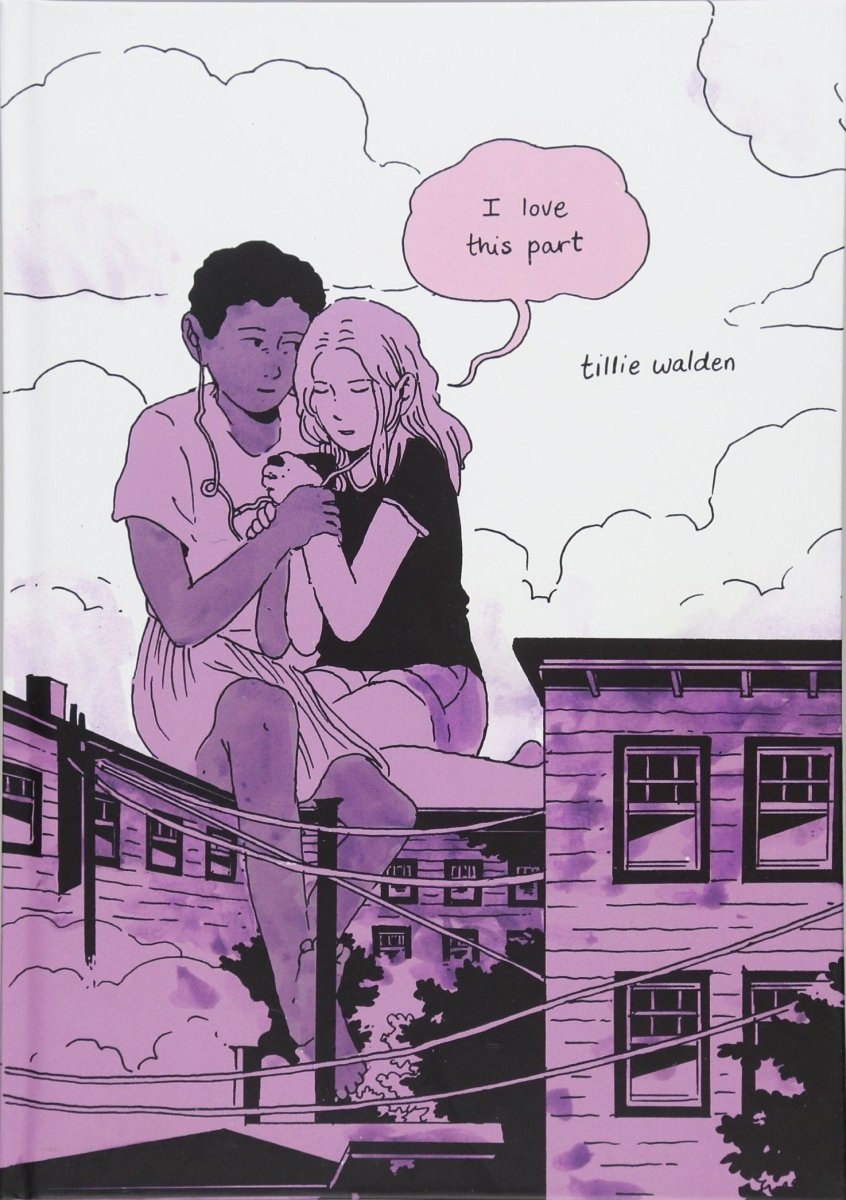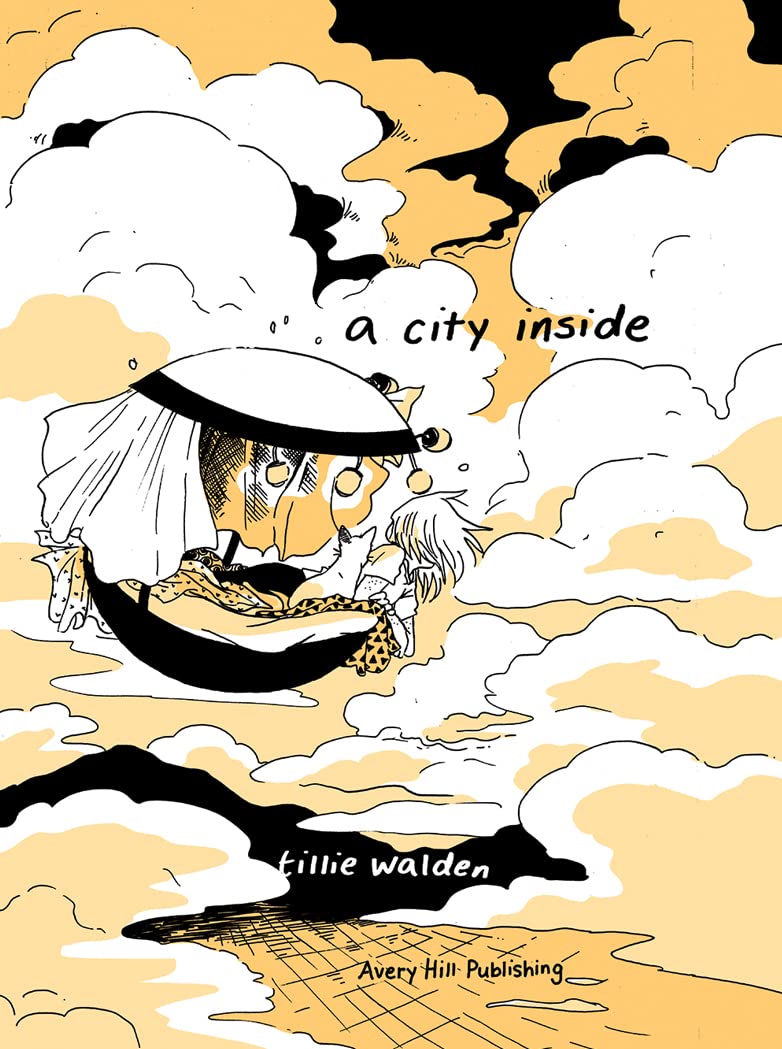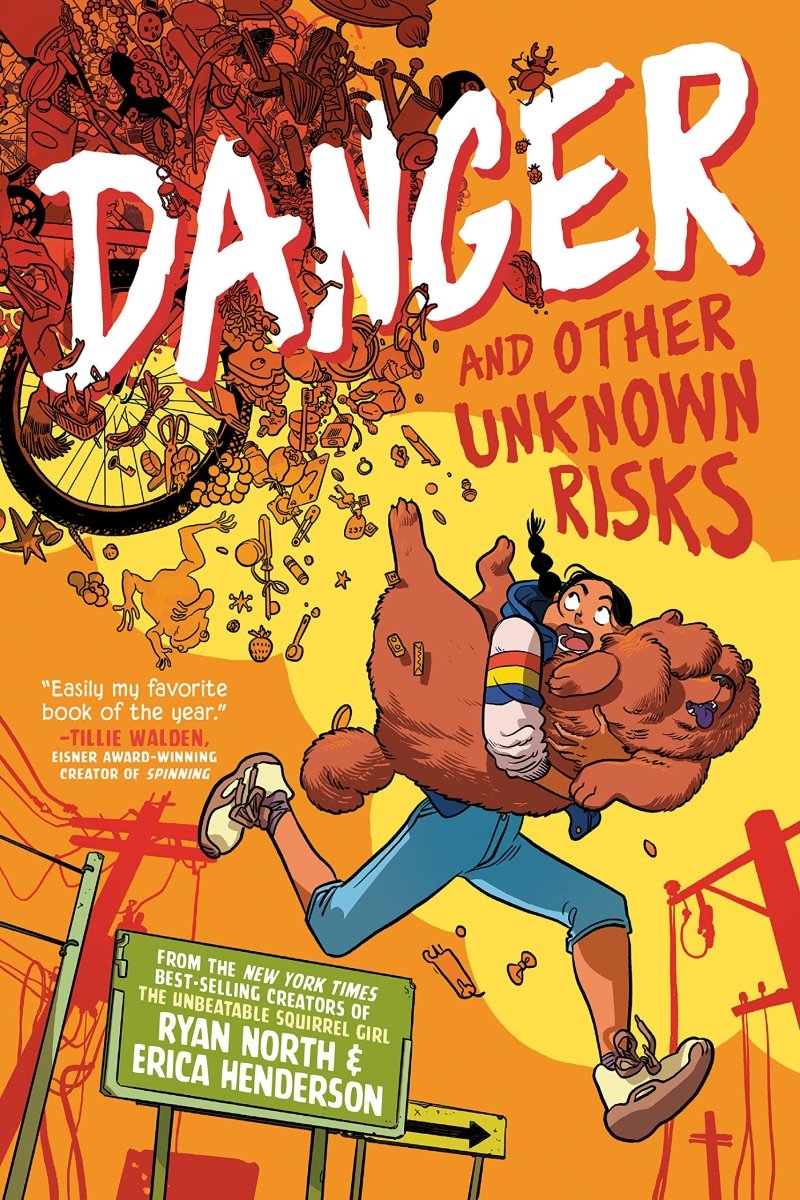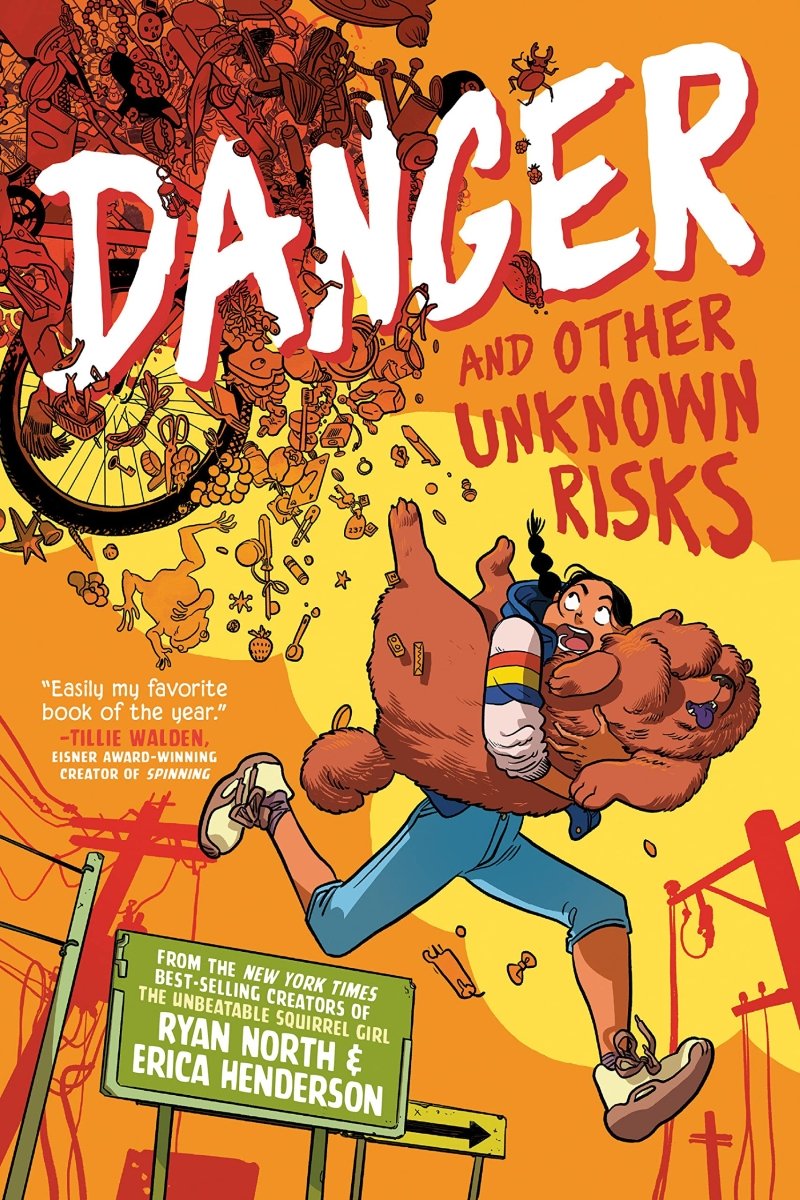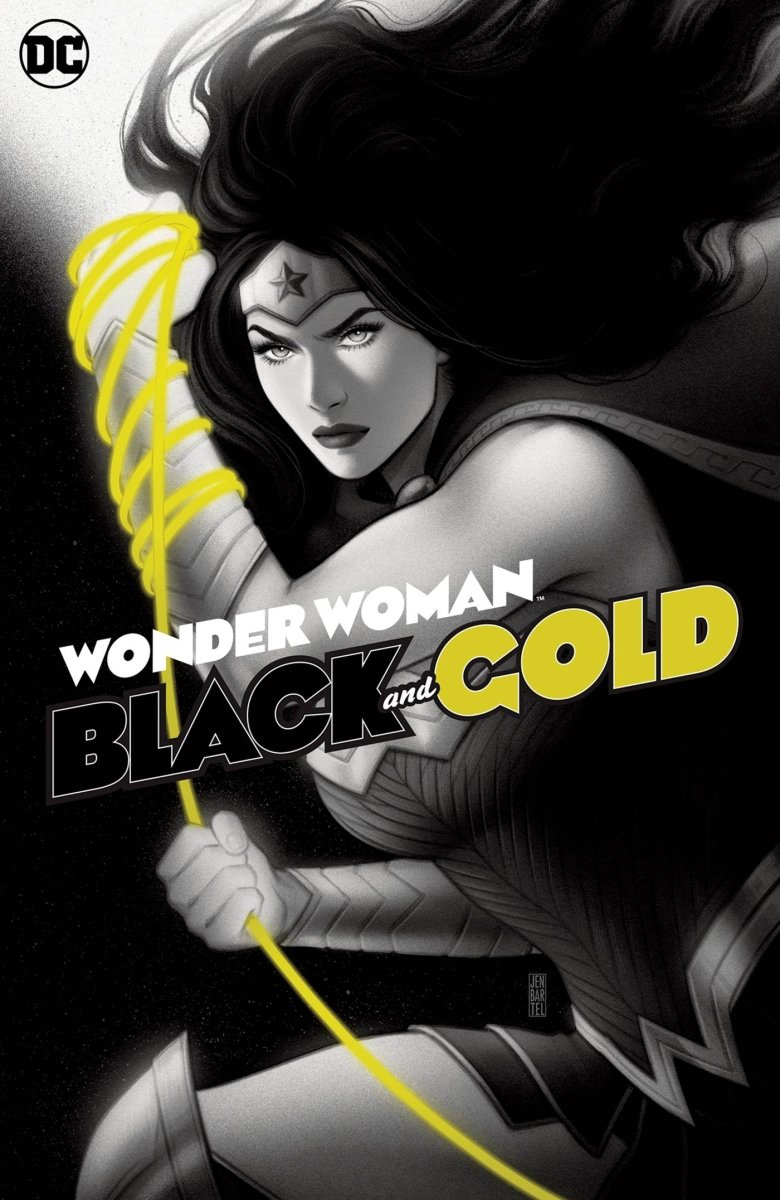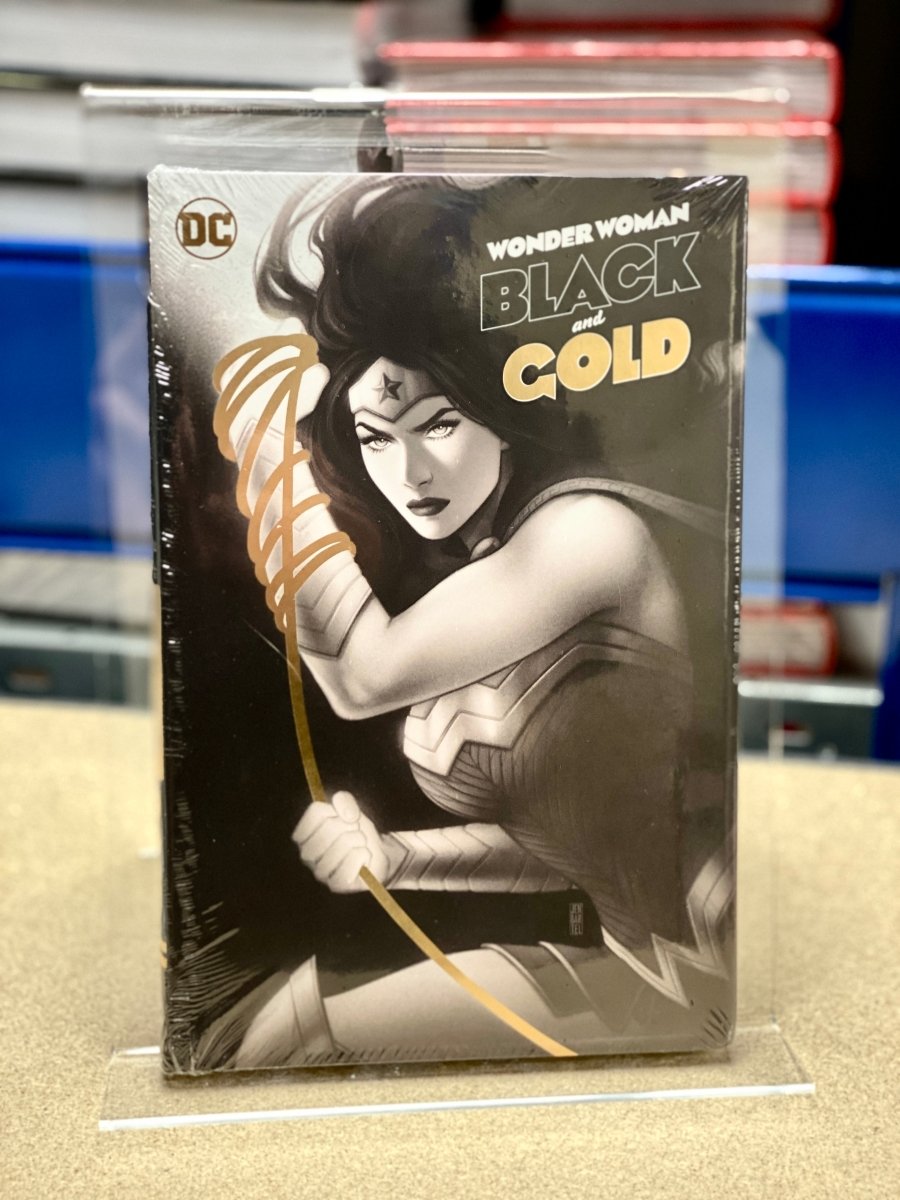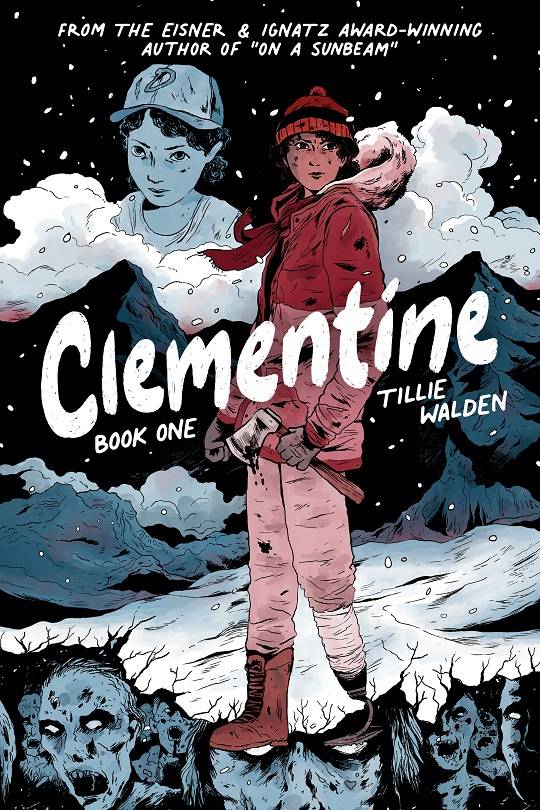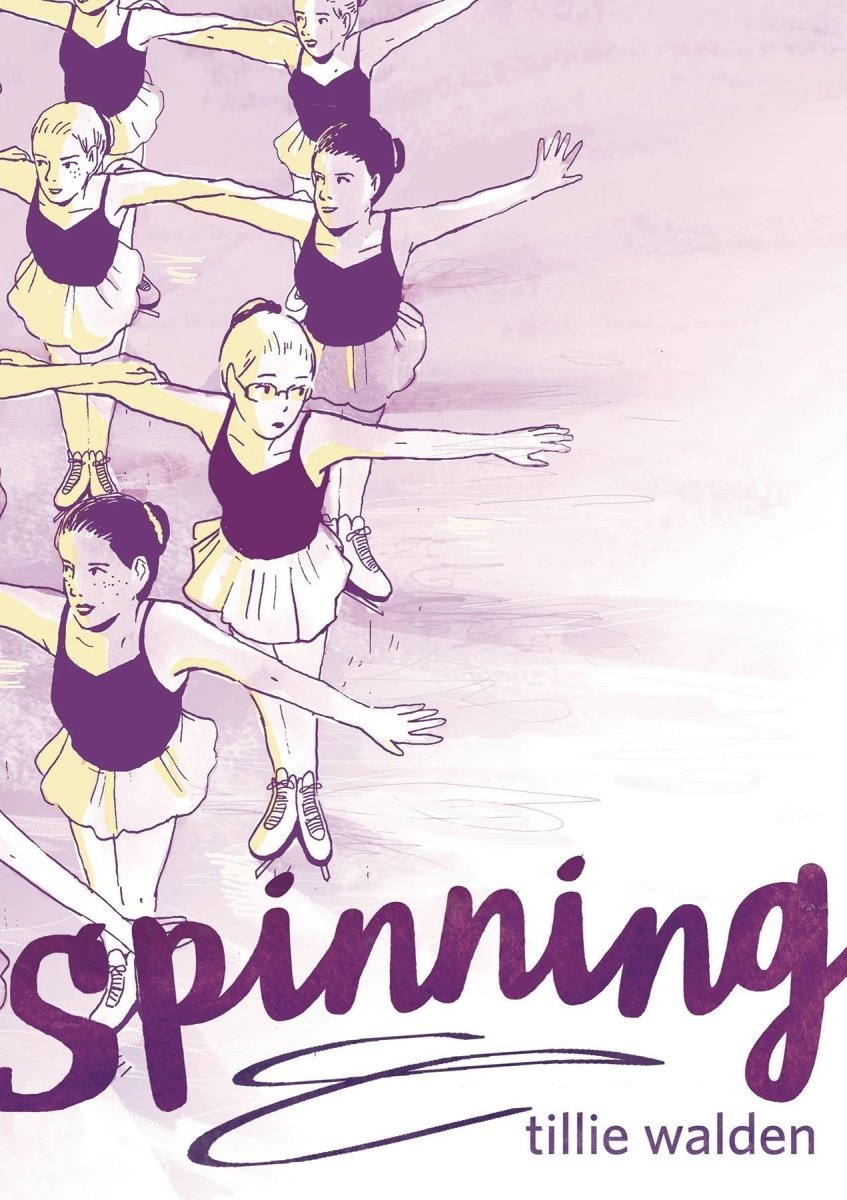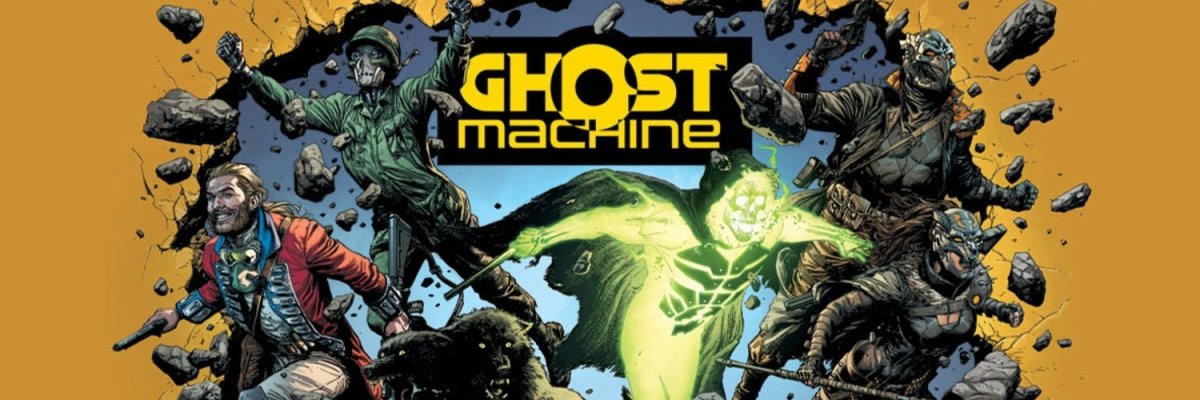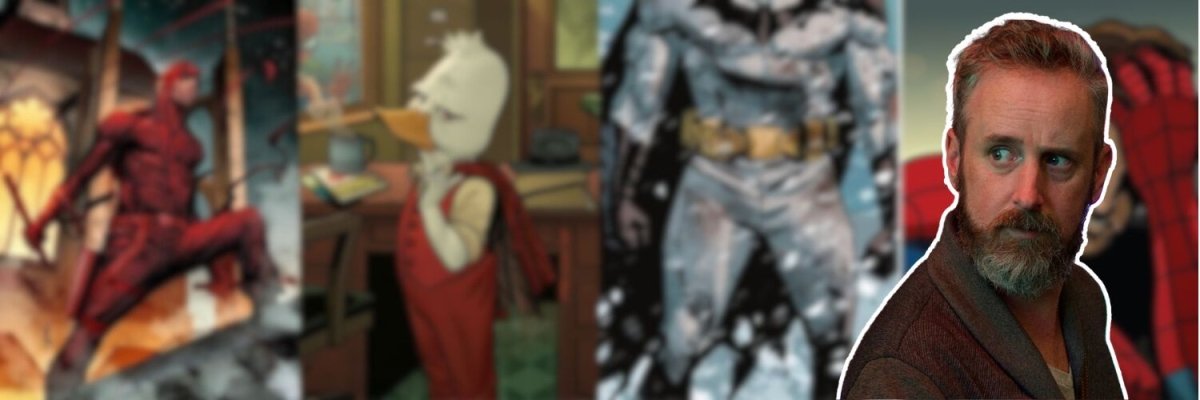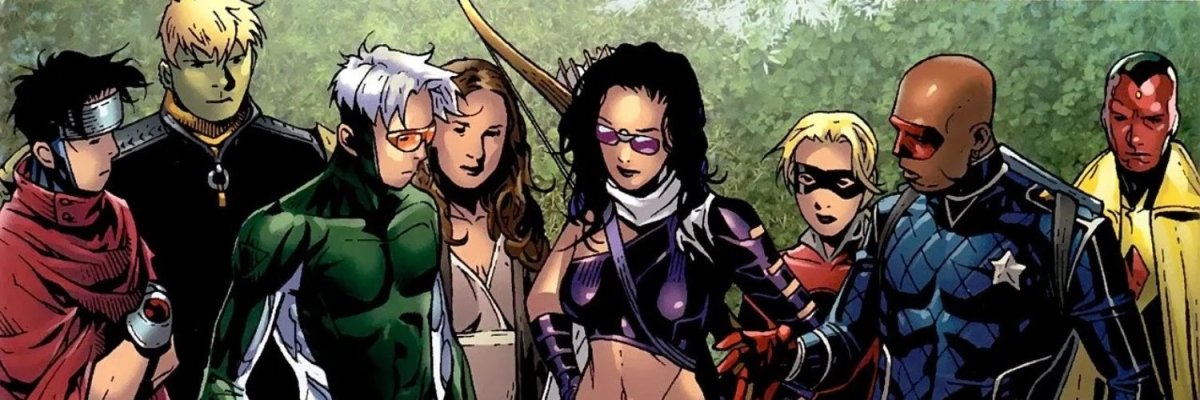
Written by Matheus
Filmmaker by day, Wishlistmaker by night. Kamala Khan’s unofficial PR team since 2014.
Between surreal landscapes of stunning fantasy worlds and a glimpse into the family car when she came out to her dad, Tillie Walden finds a sweet spot between autobiographical confession and creative liberty. This results in her being one of the most prominent cartoonists in the graphic novel sphere. In that space, she became one of the youngest to ever win an Eisner Award. What helps to explain this no small feat is her drawing style, which feels like Studio Ghibli accompanying stories that read like a new Alison Bechdel (from the classic Fun Home). Also, while young, Tillie has experiences to share that are very specific but universally identifiable in some way or another.
I’ve read all her graphic novel work, and I’m so excited to share a bit with you about how they made me feel, so you can choose what speaks to you the most.
Spinning (2017)

My writing teacher in college used to say that every writer starts by telling stories about themselves, and then moves on to more fictional routes. That is true – writing is nothing but giving our inner voices a place to live, and our own experiences tend to be the first frame they find. But I also always thought that was a simplistic statement. I don't think we ever stop writing about ourselves. We just find different vessels to share parts of ourselves with, whether that means things we are, things we want to be, or things we dread to think we could become. Starting to read an author through their autobiographical work, like Spinning, and then dipping into their fictional realms felt like a roadmap opening up – an insanely beautiful roadmap.
Every chapter here starts with a lesson of sorts. A movement from ice skating is explained and exemplified through drawing. “I still remember that movement today,” is what they are basically implying. In that, Tillie is saying to us, “everything in this book still lingers.”
Slices-of-life books such as this can be confused with ordinary day-to-day affairs, when they are far from that. Childhood and formative years are engraved in our DNA. It is easy to point out how discovering yourself as queer in the book is so identifiable because of the sincere and direct way of their writing, but the magic of the book is in the moments before or after the big events. Sometimes queer coming-of-age stories are about the self-discovery event of realizing you’re queer. Here, the self-discovery is a quiet memory, and the true event is the “Quietly falling in love, over and over again, never once thinking it could ever be real” that follows it.
Childhood is like clockwork sometimes. You go to school, you go to your designated activity that is supposed to be “your thing” (in this case, ice skating, or music, or something else), then you go back home and start all over again the next day. But then Tillie hits you with her dad saying something like, “Waking up this early is hard on your dad too,” and you understand the point of autobiographical works – to point out something that slipped by you but now makes perfect sense. And you repeat. And then you realize your truth might not be with the designated thing. You’re good at it, but it is not what you will be. But still, it lingers.
On A Sunbeam (2018) 
Another reason you should read Tillie is her artwork, and there’s no better example than this webcomic now collected all together. Tillie is (if you’ll permit my Marvel-obsessed wording) an imaginaut. She creates worlds that feel like dreams you once had, and her pen is an assertive mapping of these places in her head. This is a sci-fi story that shows you wonders and never really explains them to you. Instead, it gives you comprehension of the imaginative through the characters. They are the ones whose threads you will cling to. And in this case, you might become a bit obsessed with it (as good webcomics tend to do).
We follow a crew on a ship that is kind of like a whale (I think). These are basically construction workers – they go to places and turn them into something else, like beautiful, Moebius-like spaces that are supposed to become working offices soon. It’s a world that always seems to be breaking apart. While uncovering the crew’s past, Tillie throws in the middle of it a boarding-school queer romance that turns into a forbidden quest into the unknown. In this broken reality, everything is fixed with love, audacity, and a bit of stubbornness, along with very nice dialogue and character building. The memorable parts are sometimes the resolutions she grants to the characters we are meant to hate along the way. She gives them grace in the form of unveiling. I would even say this feels like a pocket Brian K. Vaughan Saga, in the sense that it is unapologetically creative and intense in its love for character work in comics, while also being unapologetically comics.
Are You Listening? (2019)

Tillie’s comic books can sometimes reveal themselves to you like a gut punch, and this is one of those. The story follows a car lift that turns into an accidental road trip between two queer women escaping from something. One is a young kid getting away from something she doesn’t name, and one is an almost-30 (but not 30 yet) woman who doesn’t even realize she’s escaping until it catches up to her. It’s a beautiful story about abuse, grief, and the intersections of roads that cross both of those things. The heart is these two women who grew up in the same city, have the same sexuality, but at first could not feel further apart. They feel alone, that’s why. And in the process of finding each other, they end up finding how to heal and move on.
And there’s a cat that somehow can change reality.
I was struck in particular by the age range of the protagonists, mainly because it feels so rare to see queer people in this mentor capacity. Media makes us feel so alone in our experiences when that couldn’t be further from reality. There’s always something to learn and to share with younger generations. And for some reason, we don’t really do it. I feel like we get stuck in the “in my days it was harder” perspective, and in our eternal race to get away from a traumatic past, we tend to avoid dealing with young people who are going through the same things we did. Because it opens wounds. And Tillie is very much interested in opening those wounds (as she did in Spinning before), but not necessarily giving you a recipe for forgetting. Instead, she draws beautiful, disfigured, visually poetic, and sci-fi-inclined alternative paths to comprehension.
Alone in Space (2021)

And then we have this beautiful collection of Tillie’s early work. The introduction by Warren Bernard puts into words and references the art views of Tillie Walden. The Little Nemo in Slumberland reference feels like an “ahhh, of course” moment of realization. The parallels between architecture and fantasy, and the idea that reality is something to be played with, are very much the experience I had with her books. Thank God for those comic scholars, right?
The End of Summer
Even without them, that perspective comes through clearly when you read The End of Summer, the first story here. It feels like you’re reading Little Nemo but with a modern flair – at the same time unique and reverential. It’s like a little game of narrative hide-and-seek being played by Tillie, with the information she gives you and the things she leaves for you to imagine. A castle of wonders where kids wait for a dreadful three-month winter that keeps them locked in, hoping for it to go away. And a giant cat. It’s very much a journey through an artist finding the pace between story and art, and how those things should not limit each other in the medium.
I Love This Part
The second story, I Love This Part, makes a love story bigger than the places where it happens. It’s a heartbreaking look back at moments of love between two girls. The dialogues and the girls are giant, while the landscape is small. A romance told through imagistic poetry.
A City Inside
The third story, A City Inside, is a psychological plunge into the realities and places we keep inside us. Walden’s art of constructions (like Bernard said, architectural) is reflected in buildings and city formations that we thought were in the past but are still marked in us. It’s a short read that feels like a therapy session meant to stay with you for much longer.
The book also contains almost everything Tillie produced, such as her first comics, lesson exercises, stylistic training, and unpublished competition entries. It is so rare to have a look at this complete scale into the development and formation of an artist’s view, and it is badass that Tillie is allowing us in.
Or the single stories in this collection:
- I Love This Part: Hardcover Edition By Tillie Walden HC
- A City Inside: Hardcover Edition By Tillie Walden HC GN
Clementine (From the world of The Walking Dead)

Tillie's more commercial work appears in this The Walking Dead spinoff at Image Comics – a continuation of the Telltale Games, focusing on the character Clementine, who originated there. I remember playing those games some years ago and loving them, but I didn’t know exactly what to expect here. In those games, much of the plot hinged on you making choices for the characters. Things like: expel this erratic person from the group or not, tell the group you were bitten or keep it to yourself – that kind of scenario.
It is very hard to translate this mechanism into another medium because you inherently need to make those choices for the audience. So the Clementine you remember playing as is not necessarily the one you’re going to get. I like the choices made, because they’re not always the easiest ones.
The art is, of course, incredible and already in a very mature and fully formed place for Tillie, instead of the experimentation found in the graphic novels. Her writing style fits well with the idea that The Walking Dead is not really about the zombies, but rather about the romances and dangers of the survivors' interpersonal relationships. Or, as Robert Kirkman fans would kill me for saying – a soap opera with horror. To me, that is a very valid proposal. And Tillie is the perfect person to do it.

